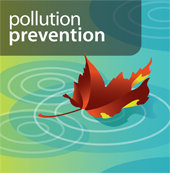Pollution Prevention

Click here to learn more about the wastewater treatment process and terminology.
Other chemicals that enter the wastewater may be removed because they have similar characteristics to targeted parameters. Still, most wastewater treatment facilities are not specifically designed to remove them all. Chemicals not removed by treatment will enter the environment.
Whether we live in an area serviced by sewer or have a septic system on our property, we all can prevent pollution. Preventing pollution before it happens is called Source Control. Source control is one of the most effective and economical ways to protect the environment and our natural resources. It also lessens the cost to maintain wastewater infrastructure. It is easy to follow these simple source control steps:
What Can Go Down the Drain:
- Pee
- Poo
- Toilet Paper
What Else You Can Do:
- Watch our videos to learn more!
- In general, avoid flushing anything that is not biodegradable
- Use greener household cleaners
- Use less laundry soap
- Put produce stickers in the garbage
- Compost instead of garburate
- Choose soap and cosmetics without microbeads
- Dispose of hazardous wastes at an approved facility
- Return expired medications to a participating pharmacy
- Visit rdn.bc.ca/curbside to learn where items should go
What Should Stay Out:
- Flushable wipes
- Facial tissue
- Paper towels
- Motor oil, gasoline, and diesel
- Paints and solvents
- Hazardous wastes
- Expired medication
- Cooking fats, oil and grease
- Cat litter
- Food waste
- Feminine hygiene products
- Condoms
- Dental floss and Q-tips
- Plastic wrappers
- Produce stickers
- Needles and sharps
Watch these videos to find out more:
"The Unflushables" is the concept and creative courtesy of Metro Vancouver.
More Resources:
- Sewer Use Bylaw No. 1730
- Learn about Inflow and Infiltration
- What to do with Kitchen Waste
- Recipes for Greener Cleaners
- Where to Return Medications
- Learn What Goes Where in the RDN
- MetroVancouver's Better Solutions
- Georgia Strait Alliance's Guide to Green Boating
- Detroit River Canadian Cleanup Video: #1, #2, and TP
- Water Environment Federation Video: Find out what happens to wet wipes, floss, cat litter, etc.
Telephone: 250-390-6560 (Nanaimo) 250-954-3792 (Oceanside) 1-877-607-4111 (Toll Free)
1-800-862-3429 (Emergency) | 250-390-1542 (Fax)
